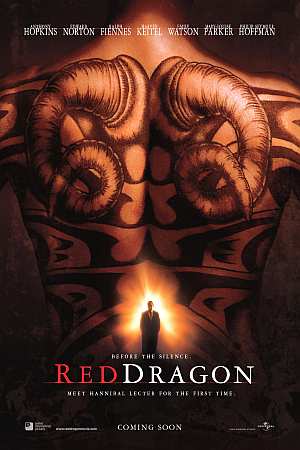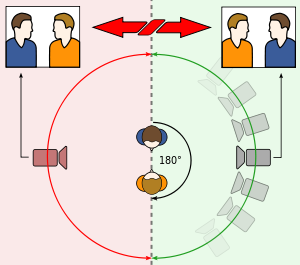Evaluation
1) In what ways does your media product use, develop or challenge forms and conventions of real media products?
For our production, “The Deception” we have used and challenged conventions. For example, our two antagonists are male which follows the general approach to thriller films, but we also challenge conventions. In the film, when Big Tony walks to meet Donny, there are two business-women who walk past which challenges the stereotype that men are the traditional business-models. Tamworth is not a traditional convention location to film a gang crime related thriller, because they are usually filmed in big budget and well known city locations such as London and Manchester. The colour of the titles follows the traditional conventions of a thriller films, being a misty grey colour to give the film quite a mystery theme. It’s also quite ‘film- noir’, emphasizing the cynical attitudes of Donny and Big Tony. The music is dominated by drum beats to build up the tension, and we used this music throughout so when people hear the music they automatically relate it to the film. At times we used obtrusive editing with quick shots to emphasise the drama and the conflict, a style of editing used a lot in thriller films. We’ve also made it very seamless, because if the film is ‘stop-start’ then it’s hard for the audience to capture the anticipation we wanted to get across.
 We slowed-down the speed of the first clips to exaggerate the movement of ‘Big-Tony’, and it makes him look like this big bruising character who doesn’t want to be messed with. We wanted to get this across to the audience as soon as possible, because other films such as ‘Red dragon’ give the audience something to ponder on in the first couple of minutes. Brett Ratner used a selection of images giving clues to the rest of the narrative. We also used the scrapbook effect in our film. Donny and Big Tony engage in psychological mind games, trying to demolish each other’s mental mind state. In thrillers such as Sherlock Holmes and The Dark Knight, there is often a battle for supremacy.
We slowed-down the speed of the first clips to exaggerate the movement of ‘Big-Tony’, and it makes him look like this big bruising character who doesn’t want to be messed with. We wanted to get this across to the audience as soon as possible, because other films such as ‘Red dragon’ give the audience something to ponder on in the first couple of minutes. Brett Ratner used a selection of images giving clues to the rest of the narrative. We also used the scrapbook effect in our film. Donny and Big Tony engage in psychological mind games, trying to demolish each other’s mental mind state. In thrillers such as Sherlock Holmes and The Dark Knight, there is often a battle for supremacy. In ‘The Deception’, this is again the case. The audience are locked in the decision of who to take sides with, Donny or Big Tony, which gives the audience a role to play in the film. For the eeriness, we decided to use low-key lighting to really represent the dark side to both of these characters. We used a shade of blue to emphasize this darkness, and we used this blue in a lot of the clips to make sure the film kept continuity. We used a mix of natural lighting and artificial lighting highlighting the range of locations we used for the film opening.
2) How does your media product represent particular social groups?
We have used reasonably young characters for our film with the male youth wearing suits which challenges the stereotype that young males are ambitionless. It makes the male characters look more professional and shows that they care about their appearance, which is usually more of a concern for women. The regional identity of the characters can be noticed as quite ‘Brummy’, an accent linked to the city of Birmingham. People tend to link Birmingham to being quite a multi-cultural but rough area, and the actions of Big Tony go along with this tradition.
The accents of the characters suggest they are of social class C to D, but the suits give them a stronger representation and as an audience you respect them more. The attitude of Big Tony towards the receptionist, who is a middle aged woman, is quite intimidating which could be a reflection on society today, and you can ask the question ‘do the older society feel threatened by the youth?’ The two henchman who were involved in the last scene are both male which follows the convention of males being linked to violence, but they are also wearing suits but with no ties and their top buttons undone.
The accents of the characters suggest they are of social class C to D, but the suits give them a stronger representation and as an audience you respect them more. The attitude of Big Tony towards the receptionist, who is a middle aged woman, is quite intimidating which could be a reflection on society today, and you can ask the question ‘do the older society feel threatened by the youth?’ The two henchman who were involved in the last scene are both male which follows the convention of males being linked to violence, but they are also wearing suits but with no ties and their top buttons undone.
I feel this makes the henchmen look more rebellious, but at the same time with Big Tony wearing a tie, it immediately suggests that he is higher up in the pecking order than the henchman. This is typified when Phil says “bosses orders” when Donny asks “what seems to be the problem boys?” Some people could suggest the whole storyline gives the youth a bad representation, because there is a constant battle for dominance which suggests the youth only care about their reputations. But, alley ways are often dominated by the youth generation nowadays, and this is the case in the film opening when we see the entrance of Phil and Vinnie.
3) What kind of media institution might distribute your media product and why?
There are many different media institutions that could distribute our media product, so as a group we had to discuss and debate which studio would be most likely, and the best option. Some film studios were out of the question, for example Warner Brothers would not screen our film because they use big name locations with big budgets with special effects and well-known actors. Pixar would not distribute our film because they specialise in animations such as Wall-E and Toy Story. So, in the end, we decided that a British film studio would be the most likely to product our film. We decided Channel 4 based 'Film 4' and Warp Films would be ideal.

In 2002, Film 4 lost a lot of money and therefore they had to 'cut its budget significantly'. Our budget for the film would be reasonably low considering the locations, the actors and the equipment we have used e.g cost of camera. Film 4 produce a range of films with different genres, and they worked with Warp films to produce the satirical comedy film 'Four Lions'. Although our film doesn't follow the same genre, it follows the same realism with no green-screen needed to enhance our locations. Warp films leads the way in British film-making, and it succeeds in giving young british actors a chance to shine. Our actors are totally unknown to the British audience, so the perception of the characters is important as it could make or break the film. Warp films are based in Sheffield and London with further connections in Australia which could really broaden the horizon when it comes to the demographic of the audience. I felt it was important to choose a british studio as they would understand our film and storyline more, as the language at times used is British slang which might not be recognised in Hollywood.

In 2002, Film 4 lost a lot of money and therefore they had to 'cut its budget significantly'. Our budget for the film would be reasonably low considering the locations, the actors and the equipment we have used e.g cost of camera. Film 4 produce a range of films with different genres, and they worked with Warp films to produce the satirical comedy film 'Four Lions'. Although our film doesn't follow the same genre, it follows the same realism with no green-screen needed to enhance our locations. Warp films leads the way in British film-making, and it succeeds in giving young british actors a chance to shine. Our actors are totally unknown to the British audience, so the perception of the characters is important as it could make or break the film. Warp films are based in Sheffield and London with further connections in Australia which could really broaden the horizon when it comes to the demographic of the audience. I felt it was important to choose a british studio as they would understand our film and storyline more, as the language at times used is British slang which might not be recognised in Hollywood.
4) Who would be the audience for your media product?
 The target audience for our film is teenagers, as the main antagonists in the film are both around that age, therefore this demographic can understand the film the most. The certificate would be 15, as there is violence in the opening of the film.The gender that would be more likely to watch our film would probably be male as there is a stereotype that women prefer to watch Rom Com films, and also there are a minority of female characters in the film compared to the majority being male. Also, I feel the distribution of this film can indicate the target audience. Traditionally, Film4 films are usually aired on the Film4 channel itself, or 'E4'. I can imagine our film being aired on a night time on E4 quite a long time after the cinema release, as this slot is usually dominated by programmes such as 'How I Met Your Mother' and 'Skins', with these programmes tending to attract the young adult demographic.
The target audience for our film is teenagers, as the main antagonists in the film are both around that age, therefore this demographic can understand the film the most. The certificate would be 15, as there is violence in the opening of the film.The gender that would be more likely to watch our film would probably be male as there is a stereotype that women prefer to watch Rom Com films, and also there are a minority of female characters in the film compared to the majority being male. Also, I feel the distribution of this film can indicate the target audience. Traditionally, Film4 films are usually aired on the Film4 channel itself, or 'E4'. I can imagine our film being aired on a night time on E4 quite a long time after the cinema release, as this slot is usually dominated by programmes such as 'How I Met Your Mother' and 'Skins', with these programmes tending to attract the young adult demographic.  Each film has a traditional demographic, for example films such as 'The Simpsons Movie' would have a reasonably young target audience as the programme itself on Channel 4 attracts this age group. Films such as 'The Iron Lady' based on Margaret Thatcher and 'The Kings Speech' based on a stuttering previous King of England would traditionally attract an older audience, as it has more significance to their life. Audiences who like real life situations and everyday locations would most likely be the ones to watch our film, as the film itself isn't a massive blockbuster set in London or New York, well known locations around the world, but instead it is set in the West Midlands market town of Tamworth at the new Sixth Form Academy, and next to St Editha's church. This was a risky decision but we wanted to make the location as realistic as possible, but at the same time the storyline needed to be captivating as the audience needs to enjoy the cinematic experience.
Each film has a traditional demographic, for example films such as 'The Simpsons Movie' would have a reasonably young target audience as the programme itself on Channel 4 attracts this age group. Films such as 'The Iron Lady' based on Margaret Thatcher and 'The Kings Speech' based on a stuttering previous King of England would traditionally attract an older audience, as it has more significance to their life. Audiences who like real life situations and everyday locations would most likely be the ones to watch our film, as the film itself isn't a massive blockbuster set in London or New York, well known locations around the world, but instead it is set in the West Midlands market town of Tamworth at the new Sixth Form Academy, and next to St Editha's church. This was a risky decision but we wanted to make the location as realistic as possible, but at the same time the storyline needed to be captivating as the audience needs to enjoy the cinematic experience. On an international platform, the film would more likely to be viewed by the British public, especially people from the West Midlands as they could recognise the locations and understand the storyline and slang. The demographic social class would probably be C1 to D, as the characters in our film are quite rough, and therefore the audience could relate to the characters. Also the opening of the film is based in an office, so the working class could relate to the scenario. The upper classes are less likely to watch the film as the locations and story lines may not interest them, as big blockbusters like Iron Man and Sherlock Holmes 2 would have more significance.
5) How did you attract/address your audience?
We attracted our audience in many different ways. For example, we used intensifying drum beats at the start of the film too hook you in. The opening of the film builds up to a climax and as an audience you can recognise this climax through the tension between the characters in the film. If we had released a trailer for our film it would of been reasonably long like the trailer of 'Se7en' as it gives the audience quite a detailed explanation on what the film is like, but it doesn't give away the key storylines and plot. If we made our trailer short, we dont think many people would of watched it because the actors in the film are not recognised and the film studio isnt a big Hollywood studio so less people would be aware of it.
The titles are juxtaposed centrally, in a grey misty colour so the audience cannot see through the mist yet, they have to watch the film to learn more and get a clearer picture. Our film would be shown at the cinema even though Film4, but if the film was distributed to a cinema then we would probably show snippets before other thriller films such as Sherlock Holmes 2: A Game of Shadows because it is obvious that the audience is attracted to thriller films. If we screened the snippets before a Rom-Com, then the demographic is less likely to be interested because the stereotype is that women are more interesting in films laced with romance then films laced with fighting and violence.
We would also have T-Shirts and mugs promoting the film with funny phrases from the film such as 'When have I ever let you down?', and phrases such as 'Phil,Vinnie, you know what to do...' These phrases are quite funny and if people were wearing them it would interest people and they would be more likely to watch the film. As well as the trailers previously mentioned, we would have teaser trailers/snippets from the film on Channels such as Channel 4, E4 and Film 4, as this is the demographic we are trying to attract.
 The most important way of attracting our target audience would probably be through a Facebook Fan Page, as almost all of the young generation have access to their own Facebook profile where they can 'Like' pages such as 'The Deception', and this activity would come up on peoples news feeds when they sign in, and therefore they are more likely to look at it. Facebook is a fantastic tool for film companies to promote their film, and Film4 and Warp Films themselves have their own Facebook pages.
The most important way of attracting our target audience would probably be through a Facebook Fan Page, as almost all of the young generation have access to their own Facebook profile where they can 'Like' pages such as 'The Deception', and this activity would come up on peoples news feeds when they sign in, and therefore they are more likely to look at it. Facebook is a fantastic tool for film companies to promote their film, and Film4 and Warp Films themselves have their own Facebook pages.
The titles are juxtaposed centrally, in a grey misty colour so the audience cannot see through the mist yet, they have to watch the film to learn more and get a clearer picture. Our film would be shown at the cinema even though Film4, but if the film was distributed to a cinema then we would probably show snippets before other thriller films such as Sherlock Holmes 2: A Game of Shadows because it is obvious that the audience is attracted to thriller films. If we screened the snippets before a Rom-Com, then the demographic is less likely to be interested because the stereotype is that women are more interesting in films laced with romance then films laced with fighting and violence.
We would also have T-Shirts and mugs promoting the film with funny phrases from the film such as 'When have I ever let you down?', and phrases such as 'Phil,Vinnie, you know what to do...' These phrases are quite funny and if people were wearing them it would interest people and they would be more likely to watch the film. As well as the trailers previously mentioned, we would have teaser trailers/snippets from the film on Channels such as Channel 4, E4 and Film 4, as this is the demographic we are trying to attract.
 The most important way of attracting our target audience would probably be through a Facebook Fan Page, as almost all of the young generation have access to their own Facebook profile where they can 'Like' pages such as 'The Deception', and this activity would come up on peoples news feeds when they sign in, and therefore they are more likely to look at it. Facebook is a fantastic tool for film companies to promote their film, and Film4 and Warp Films themselves have their own Facebook pages.
The most important way of attracting our target audience would probably be through a Facebook Fan Page, as almost all of the young generation have access to their own Facebook profile where they can 'Like' pages such as 'The Deception', and this activity would come up on peoples news feeds when they sign in, and therefore they are more likely to look at it. Facebook is a fantastic tool for film companies to promote their film, and Film4 and Warp Films themselves have their own Facebook pages. 6) What have you learnt about technologies from the process of constructing this product?
We have learnt about technologies during the construction of our product. We used Adobe Premier Pro to edit our film opening sequence, software I had never used so it was all new to me. In terms of creating a film opening sequence I was inexperienced, but as the project has progressed I have gained new skills. A key skill I have gained is how to use a Sony HD Camera, and equipment such as 'dollies' and tripods. Both pieces of equipment keep the camera steady and it makes the film look more professional. We learnt all about spirit levels, and how the circle needs to be central to show that the camera is not tilted, and we made sure this was the case for all our clips to show continuity and professionalism.
The editing stage was one of the most important parts of the whole project. We used Adobe Premier Pro, a software which has actually been used to create a real film in the past. We used text slides to write the titles to the film e.g director name and editor and we had to make sure each piece of text was positioned in a suitable place, where the audience would be able to read the information. Therefore we had to consider font, text, colour and size, and these are very important decisions made in film-making. We made sure the text was a colour that fits in with the theme of the film, that theme being grey. We also learnt about transitions and tints to make the film more seamless and add a dark atmospheric tone to the film.
We used Google's 'Blogspot' to write entries on information we had obtained from class and from our own personal research at home and I feel this has helped me achieve as good as I can in the course, and it is also a good place to store information and revise from. We learnt how to create blog entries and add videos to the blog, and I used this knowledge to add our film opening onto the blog. Websites such as ‘Incompetech’ provide the user with copyright free music for our film and we used this website for our music, and this was a decision we took seriously because the music in a film always gives an indication to what genre it is.
We have learnt about technologies during the construction of our product. We used Adobe Premier Pro to edit our film opening sequence, software I had never used so it was all new to me. In terms of creating a film opening sequence I was inexperienced, but as the project has progressed I have gained new skills. A key skill I have gained is how to use a Sony HD Camera, and equipment such as 'dollies' and tripods. Both pieces of equipment keep the camera steady and it makes the film look more professional. We learnt all about spirit levels, and how the circle needs to be central to show that the camera is not tilted, and we made sure this was the case for all our clips to show continuity and professionalism.
The editing stage was one of the most important parts of the whole project. We used Adobe Premier Pro, a software which has actually been used to create a real film in the past. We used text slides to write the titles to the film e.g director name and editor and we had to make sure each piece of text was positioned in a suitable place, where the audience would be able to read the information. Therefore we had to consider font, text, colour and size, and these are very important decisions made in film-making. We made sure the text was a colour that fits in with the theme of the film, that theme being grey. We also learnt about transitions and tints to make the film more seamless and add a dark atmospheric tone to the film.
We used Google's 'Blogspot' to write entries on information we had obtained from class and from our own personal research at home and I feel this has helped me achieve as good as I can in the course, and it is also a good place to store information and revise from. We learnt how to create blog entries and add videos to the blog, and I used this knowledge to add our film opening onto the blog. Websites such as ‘Incompetech’ provide the user with copyright free music for our film and we used this website for our music, and this was a decision we took seriously because the music in a film always gives an indication to what genre it is.
7) Looking back at your preliminary task, what do you feel you have learnt in the progression from it to the full product?
I feel I have developed many skills since my preliminary task at the start of my A-Level media studies course. The preliminary task ended up playing a major role in our final product, because it acted as a draft film, as we used the same genre and storyline for "The Deception". We also gained knowledge about different softwares such as iMovie and Adobe Premier Pro, because we used the latter for our final product and therefore we had to learn about all of its attribrutes. One of the key skills I have had to develop is group leadership and group co-operation. As I have been in every Media Studies lesson this term I feel I have taken the role of pulling things together, and letting people know where we are and what we need to do. Working in a group is one of if not the most important role in Media Studies, and over the year, despite some disagreements, we have worked together and overcome any hurdles we have faced. For example, we had a debate on whether to film all our production in film-noir, with different people offering different opinions. In the end we came to a conclusion that pleased all parties, but at times it wasn’t as easy as that and we had to discard ideas that we, as a group, did not think would work. When you film, its often typical that you do not recognise continuity errors, and we made a mistake when one of our actors had a hair cut! As a group we had to come up with a solution, which ended in us having to film certain scenes again.
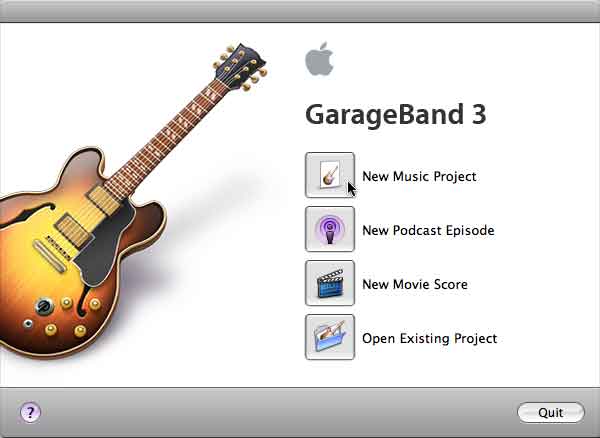 We also had to make sure we listened to other people’s views so everyone had an equal say in decisions such as storyline and location. Overall our preliminary task was quite positive, but we had room for improvements and over the year we have learnt new skills within media itself. In the project, we realised we had broken the 180 degree rule, so we had to go back and film the scene again. Although this was an elementary error, we can learn from it and make sure it doesn’t happen again. I
We also had to make sure we listened to other people’s views so everyone had an equal say in decisions such as storyline and location. Overall our preliminary task was quite positive, but we had room for improvements and over the year we have learnt new skills within media itself. In the project, we realised we had broken the 180 degree rule, so we had to go back and film the scene again. Although this was an elementary error, we can learn from it and make sure it doesn’t happen again. Ifeel I have developed my camera skills as well, as for our preliminary task the camera was a bit shaky and we didn’t really establish the rules of good film-making. Over time we have learnt about ‘Shot-reverse-shots’ and ‘Match-on-action’ and therefore we could include these in our final product. We also used Garage Band to recreate the Charlie Chaplin song, and although we didnt use this software for our film opening, it has given us knowledge into creating music, and the whole experience has been very captivating, creative and educational.







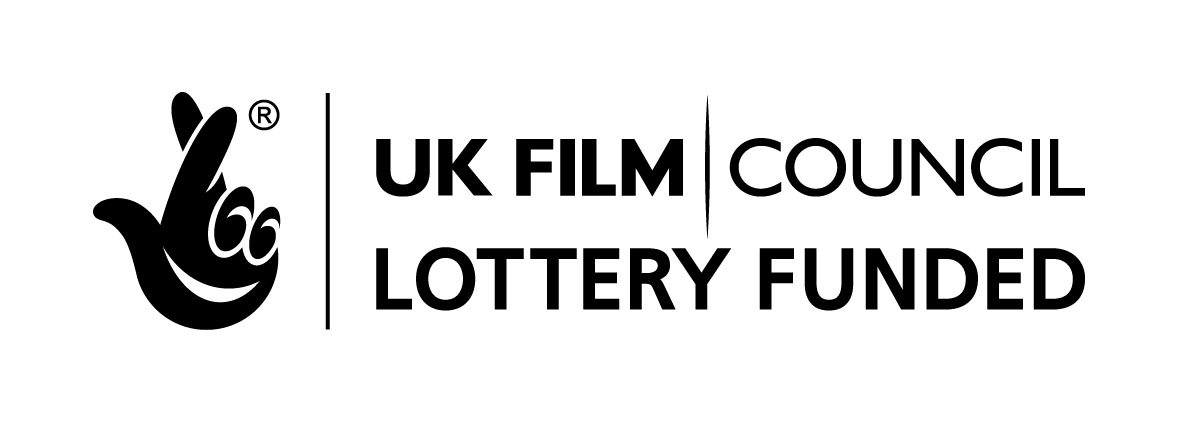













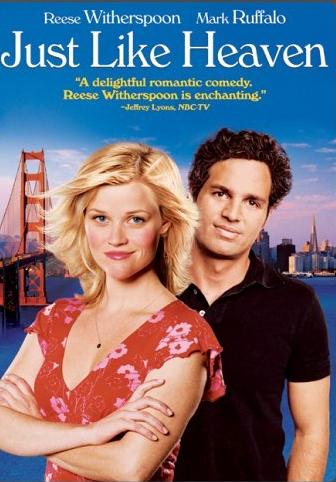



.jpg/220px-Frankenstein%27s_monster_(Boris_Karloff).jpg)


